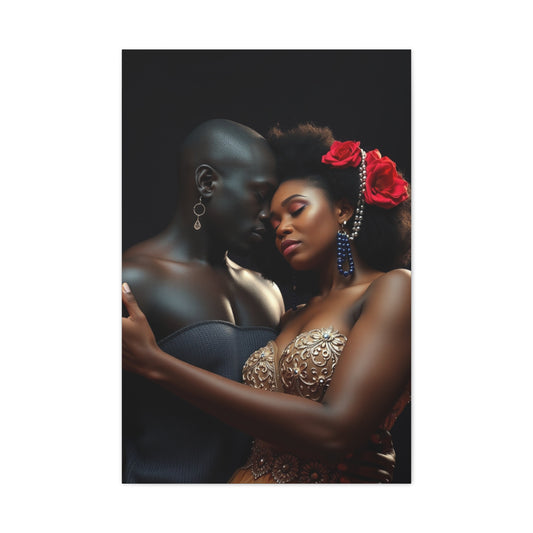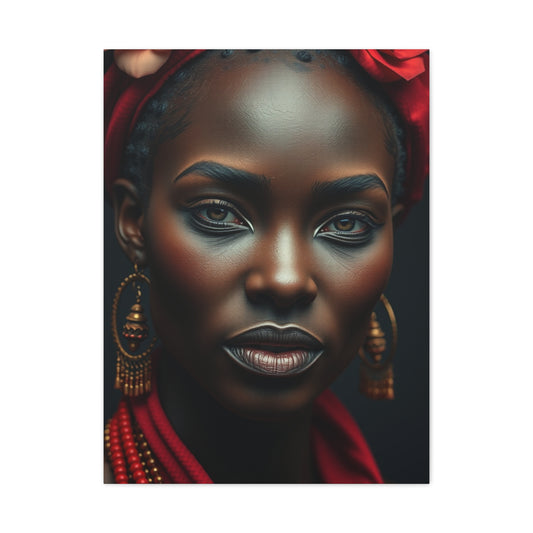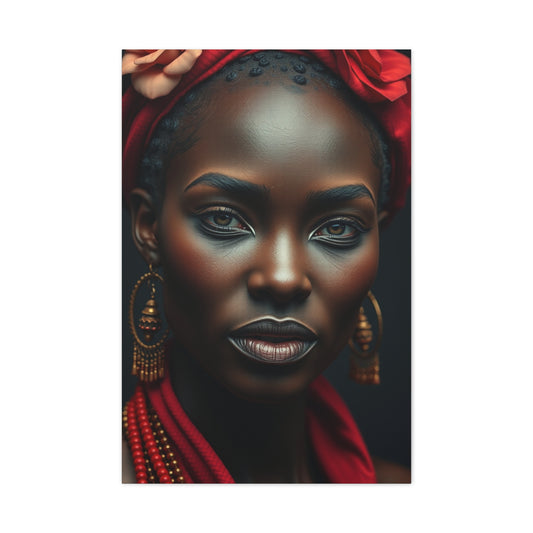A pooja room is much more than a small corner reserved for ritual. It is the very sanctum where the spirit is invited to dwell, where ancient mantras echo against the walls, and where the energies of the home are quietly anchored. The lighting in such a sacred enclave is not a background element but an active presence in the spiritual dialogue that takes place within. Choosing the right illumination is an act of devotion in itself, balancing the serenity of spiritual ambiance with the clarity of functional brightness. Too little light allows shadows to swallow the sanctity, while excessive glare replaces calm with an unyielding sharpness. The art lies in crafting a luminous environment that nurtures devotion while enhancing the beauty of the surroundings.
Modern households have embraced lighting ideas that go beyond simple brightness, turning illumination into an architectural and artistic feature of the pooja space. From LED halos that wrap around wooden panels to suspended drop lights shaped like temple bells, these additions transform a room from functional to truly memorable. The goal is to create a setting where light becomes a companion to prayer, making each moment of worship feel intimate and intentional.
One elegant approach is back panel brilliance. Imagine a wooden or glossy laminated wall behind the deity, subtly lit with hidden LED strips that emit a gentle radiance. This soft halo frames the idol, ensuring it remains visible without harsh shadows. The warmth of the wood and the golden tone of the light blend to create a cocoon of devotion. Without relying on overhead fixtures that may disrupt the visual stillness, back panel lighting evenly bathes the entire pooja area in a glow that invites contemplation.
In homes that wish to retain traditional character, lighting can be a harmonious bridge between heritage and modernity. Placing symmetrical decorative lights on either side of the idol draws focus to the divine center. This can be done through ornate wall-mounted lamps or slender vertical strips of light. More than decorative flourishes, these twin sources act as beams of reverence, embracing the deity in an illuminated embrace. They also bring to life carved woodwork, etched brass panels, or embossed backdrops, creating a living tapestry that changes as daylight fades and the warm glow of lamps takes over.
For those who prefer a more striking visual statement, decorative hanging lights shaped like bells bring cultural symbolism and dramatic presence to the pooja space. They guide the eyes from the ceiling down to the altar, connecting the room vertically while honoring tradition. When paired with recessed focus lights in shelves or panels, they provide both targeted illumination and atmospheric depth. This layered approach works especially well when the altar includes framed deity images or tiered arrangements, as each layer benefits from its own subtle accent.
Decorative lighting also offers a chance to integrate regional artistry into the sacred space. Brass shades with hand-hammered patterns, etched glass globes, and cane-woven lanterns serve both as sources of light and as objects of beauty that connect the family to its cultural roots. Each handcrafted element becomes part of the visual and spiritual narrative, enriching the atmosphere during daily rituals.
For smaller homes or apartments where the pooja space occupies a compact alcove or a corner of a living area, recessed lighting is an inspired choice. Installed directly into wooden panels or marble backdrops, these fixtures provide a steady, warm glow without protruding into the space. By eliminating visible fittings, the focus remains entirely on the sacred objects. The result is a space that feels expansive despite its modest dimensions, especially when paired with natural materials like stone inlays, carved lattice panels, or miniature brass lamps.
Minimalist devotees often prefer a single, purposeful beam of light to illuminate the altar. In such spaces, one spotlight directly above the deity creates a precise focal point, directing all visual attention to the divine presence. This can be gently complemented by the flickering flames of traditional diyas, adding a living layer to the lighting scheme. In homes with contemporary interiors characterized by clean lines and pale woods, this simplicity resonates deeply. The purity of the setup is a reflection of the focused devotion it inspires.
Lighting in a pooja room also benefits from a consideration of time and mood. Morning prayers often feel most uplifting with cooler light tones reminiscent of daylight, while evening aarti may call for a warmer, golden hue that reflects the peace of sunset. Dimmer controls offer the flexibility to shift brightness and warmth depending on the time of day and nature of the ritual. This creates a dynamic yet harmonious interplay between natural light sources, such as oil lamps and camphor flames, and electric illumination. Rather than overpowering the natural glow of firelight, well-planned electric lighting frames and enhances it, producing a layered luminescence that feels alive.
The materials used in the pooja room have a profound effect on the lighting’s impact. Smooth granite reflects sharply, matte wood absorbs and softens, while white tiles amplify brightness. Darker stone surfaces absorb more light, making placement and temperature even more crucial. A wooden ceiling paired with white laminate panels may benefit from warm-white LEDs that highlight the natural wood without creating stark contrast against the white. Translucent materials like frosted glass or thin marble sheets can be backlit to transform the entire backdrop into a glowing surface, eliminating shadows and creating an enveloping sense of calm.
Storage elements in a pooja room can also be integrated with lighting. Drawers and cabinets that hold incense, holy texts, and ritual vessels can have hidden lights that activate when opened, maintaining both function and ambiance. Carved jaali panels can conceal LED strips that project patterned light onto surrounding surfaces, adding a poetic dimension to the sacred space. This integration turns the lighting into a structural element rather than a decorative afterthought, allowing every feature of the room to participate in the atmosphere of devotion.
Sustaining this sacred glow over time is as important as selecting the right fixtures. Lights in a pooja room are exposed to heat from lamps, smoke from incense, and occasional oil splashes, so they must be durable and easy to maintain. Dust can dull even the brightest source, so regular cleaning preserves the integrity of the light and keeps the space ready for worship. When cared for, the illumination becomes a constant and quiet companion to daily rituals, keeping the space sacred and inviting.
Ultimately, lighting a pooja room is an act of shaping the spiritual environment. Whether through a halo of concealed LEDs, the symmetrical embrace of side-mounted lamps, or the layered depth of decorative and recessed fixtures, the goal is to create a setting where prayer feels natural and unhurried. Light becomes more than a practical necessity; it is the subtle force that holds the space together, guiding the eyes, calming the mind, and opening the heart to the divine.
Enriching the Sacred Atmosphere with Light
When crafting the lighting for a pooja room, one must think beyond simple brightness to the way illumination shapes the emotional and spiritual atmosphere. The act of worship is deeply tied to sensory perception, and light plays a role equal to the fragrance of incense or the resonance of a chant. It can soften the air, focus the mind, and draw attention to sacred symbols, turning even a quiet moment into a profound experience.
Layering light sources is a method that lends richness to the space. A base layer of ambient glow from concealed strips or diffused wall lights ensures a gentle overall brightness. This is complemented by accent lighting, such as a focused beam on the deity, to create a visual hierarchy that honors the sacred center. The final touch often comes from natural flame sources like diyas, whose flickering unpredictability breathes life into the otherwise steady electric light.
Spatial awareness is equally important. In larger pooja rooms, multiple lighting points can help balance the visual weight, preventing any one area from feeling too dominant. For smaller spaces, light placement can create the illusion of depth, making the altar feel grander and more open. Even the direction of the light matters, as front lighting can flatten details, while side or back lighting adds texture and drama.
The transition between daylight and artificial light should also be considered. Morning sunlight filtering into the room can be complemented by cool LEDs that mimic its clarity. As evening arrives, these can gradually give way to warmer tones that soothe the senses. This natural rhythm keeps the lighting in harmony with the body’s own responses to light, making the space feel in tune with both the physical and spiritual worlds.
Cultural and regional identity can be expressed through lighting as well. A South Indian home may favor brass oil lamps suspended from the ceiling, their gleam amplified by warm light from below. A North Indian pooja room might include patterned glass sconces that cast intricate shadows on surrounding walls. Each choice becomes part of the family’s devotional language, telling a story with both form and light.
In homes where the pooja space must share a room with other functions, lighting can help visually separate the sacred from the everyday. A well-lit backdrop, a concentrated spotlight, or a perimeter glow can create a subtle boundary that invites the worshipper inward, mentally stepping out of the surrounding activity. This approach allows the pooja room to retain its sanctity without needing physical isolation.
Finally, the emotional connection between light and ritual cannot be overstated. A softly lit altar in the quiet of early dawn invites reflection and calm. A warmly glowing space during evening aarti feels communal and celebratory. Over time, these lighting cues become part of the rhythm of devotion itself, signaling moments of stillness, gratitude, and connection.
In creating illumination for a pooja room, the aim is always the same: to deepen the sacred experience. Every choice, from the temperature of the LEDs to the placement of a single diya, contributes to an environment where worship feels effortless and immersive. The right light does not merely reveal the space; it reveals the devotion within it, turning architecture, objects, and air into a seamless expression of reverence. By thoughtfully weaving light into every surface and corner, the pooja room becomes a living sanctuary where the divine is not only seen but felt in every ray.
Thematic Lighting for Diverse Pooja Room Architectures
Pooja rooms are as varied as the households they grace, each reflecting a unique blend of devotion, artistry, and spatial design. Some are resplendent with intricate wood carvings, shikharas, and jaali panels reminiscent of traditional temples, while others are minimalist alcoves holding just an idol and a bell. Every style carries its own soul, and the lighting approach should be thoughtfully tailored to match both the architectural character and spiritual ambiance. When illumination is in harmony with structure, it elevates the sanctity of the space, making rituals feel more profound and personal.
In temple-style carved sanctums, where ornate woodwork and architectural grandeur dominate, lighting must enhance craftsmanship without overwhelming the space. Placing small uplights at the base of carved pillars allows delicate detailing to glow with depth, highlighting contours and textures while maintaining a sense of reverence. Soft cove lighting in the ceiling can then wash the space in a gentle radiance, ensuring the deity remains the undisputed focal point. Warm amber-toned lighting works beautifully with natural wood finishes like teak or rosewood, evoking the charm of traditional oil lamps while creating a play of shadow and glow.
For pooja rooms enveloped in marble, lighting can transform the reflective surface into a luminous canvas. Backlit panels of onyx or translucent marble bring an ethereal quality, making the wall itself appear to emit a soft glow. The reflective quality of marble also amplifies the effect of recessed ceiling lights, brightening the space without harshness. Chandeliers or pendant lights, particularly those with crystal elements, can scatter delicate reflections across the room, producing a celestial atmosphere. This brilliance, however, relies on clarity, making regular cleaning of glass and crystal elements an important consideration.
Minimalist niches, common in modern homes, require a subtler hand. A single recessed spotlight above the idol provides a clean, uninterrupted beam that draws the eye naturally, while concealed LED strips under shelves can introduce a second, softer lighting layer. Adjustable color temperature LEDs are ideal for these spaces, shifting from neutral white during the day to a warm tone in the evening to suit different rituals and moods. The simplicity of form pairs well with lighting that is precise yet adaptable.
Pooja rooms with jaali partitions offer a unique interplay of light and shadow, turning illumination into a visual feature. Warm LED strips placed along the inner edges of the jaali frame create a gentle outline that accentuates the patterns without excessive brightness. The resulting shadows dance across walls and floors, adding texture and movement to the devotional atmosphere. In open-plan homes, this lighting technique subtly defines the pooja area while maintaining visual continuity with the surrounding spaces.
For compact homes, wall-mounted pooja units merge form and function efficiently. Lighting within these units should highlight the idols and artifacts while also adding depth. Slim LED strips under shelves can illuminate objects below, and small integrated spotlights in the top panel can focus attention on the central figure. When these units are crafted from dark wood, slightly brighter lighting can counteract the natural absorption of light, and a balance of warm direct lighting with a cooler ambient back glow can create a visually layered effect.
Transitioning Light Across Ritual Timings
The spiritual rhythm of a pooja room is shaped by the time of day, and lighting should evolve accordingly. Morning rituals thrive under fresh, energizing light that mirrors the crispness of sunrise, encouraging focus and vitality in chanting or offerings. This can be achieved by emphasizing neutral to cool tones that stimulate alertness. As the day turns to evening, the lighting should shift toward warm, dimmed settings that invite reflection and serenity. Layering different types of lighting ambient, task, and decorative ensures this adaptability.
For example, cove lighting can serve as a soft base layer throughout the day, with spotlights activated during rituals for emphasis. Decorative elements like small diyas or lantern-style fixtures can be lit in the evening to deepen the sense of tradition and intimacy. Smart lighting systems can make this transition effortless, allowing devotees to change intensity and tone at the touch of a button, creating an environment that resonates with both the time and the ritual being performed.
Architectural lighting in pooja rooms is not merely about visibility; it is about fostering a connection between space and spirit. When chosen and positioned with care, light becomes a silent custodian of devotion, subtly guiding mood and focus. Whether enhancing the delicate filigree of a jaali screen, the smooth glow of marble, or the clean lines of a modern niche, the right lighting approach respects the sanctity of the space while amplifying its beauty. This harmony between architecture and illumination transforms the pooja room from a physical corner into a luminous sanctuary, where light and prayer merge seamlessly.
The Art of Harmonizing Decorative and Functional Lighting in a Pooja Room
Lighting in a pooja room is more than a matter of visibility; it is a subtle conversation between sacred symbolism and practical necessity. A well-proportioned blend of decorative and functional lighting transforms the space from being merely well-lit into one that feels spiritually alive. When the balance tilts too far in one direction, the magic fadesa room bathed only in clinical light loses warmth, while a purely ornamental glow may hinder the clarity needed for rituals. True harmony emerges when aesthetics and usability coexist seamlessly, shaping an atmosphere that invites both reverence and ease.
Decorative lighting in a pooja room is not just about visual charm; it often carries deep symbolic resonance. Fixtures shaped like bells can visually echo the gentle chime of rituals, while lotus motifs reflect spiritual awakening and purity. When crafted from materials such as brass or copper, these fixtures develop a natural patina over time, mirroring the slow enrichment of tradition. Even when turned off, such pieces should add to the calm and beauty of the space, never obstructing the sacred view of the deity. Placement is crucialhanging lights must be positioned so they do not interrupt the direct sightline to the altar, allowing worshippers an unobstructed connection during prayer.
Yet, beauty alone does not fulfill the needs of an active pooja room. This is a space where offerings are prepared, sacred texts are read, and oil lamps are lit. Functional lighting ensures these activities are performed comfortably. Directional spotlights can be adjusted to reduce harsh shadows on the deity’s face, maintaining a clear and respectful view. Under-cabinet lights help illuminate storage areas, making it easier to access incense, flowers, or ceremonial vessels. In households where the pooja room serves multiple family members with varied rituals, flexibility becomes essential. A mix of fixed overhead lights and portable lamps provides adaptability; a movable lamp can be positioned closer during detailed ceremonies, while ambient light can be lowered for moments of deep meditation.
Layered lighting enriches this interplay, introducing depth and nuance to the atmosphere. A base layer of ambient light evenly fills the room, preventing any corner from falling into shadow. Accent lights draw focus to the deity or religious artwork, while task lighting supports the practical activities of worship. Having independent controls for each layer allows combinations tailored to the occasion. During festivals, accent lights can work alongside flickering diyas to produce a warm celebratory glow, with ambient lighting kept low so the natural flame light takes precedence. On more routine days, ambient and task lighting may dominate, with accent lights reserved for moments when extra visual emphasis is desired.
Natural light can also play a transformative role. A pooja room bathed in the first rays of the morning sun carries an energy that artificial light cannot replicate. Skylights or carefully placed windows can direct this light toward the altar, imbuing the space with a daily reminder of nature’s cycles. Sheer curtains can soften direct sunlight, allowing it to serve as a form of ambient illumination throughout the day. When daylight is abundant, artificial lighting can be reduced, preserving its presence for early mornings, evenings, or cloudy days. This interplay between sunlight and artificial light brings a living rhythm to the space, making it feel in tune with the passing hours.
A common misstep in lighting a pooja room is over-illumination. In trying to achieve grandeur, some spaces end up so brightly lit that they feel more theatrical than sacred. The essence of a pooja room lies in its ability to invite inward reflection. Light should cradle the deity in a soft radiance, not overwhelm the eye with intensity. The most compelling sacred spaces strike a balance where the worshipper’s gaze settles naturally on the altar, free from distraction by glaring hotspots.
When decorative elegance merges effortlessly with functional clarity, the pooja room becomes a place where both spiritual energy and daily comfort coexist. The right lighting makes the rituals easier, the ambience richer, and the connection to tradition stronger. Each choice from the shape of a pendant light to the position of a focus lamp contributes to a tapestry of illumination that supports both the soul and the senses. The journey to this harmony is not about choosing between beauty and practicality, but about weaving them together into a single, unified expression of devotion.
Creating a Lighting Plan That Nurtures Spiritual Ambience and Everyday Ease
Approaching the lighting plan for a pooja room involves more than picking out attractive fixtures or ensuring adequate brightness. It calls for a thoughtful orchestration of visual storytelling, functional placement, and responsiveness to the rhythms of daily life. The ultimate goal is to create an environment where light becomes a partner in worship, reflecting the sanctity of the space while enhancing its usability.
Decorative elements should be chosen with both symbolism and durability in mind. Brass and copper fixtures, for example, not only exude traditional charm but also grow richer in appearance with the passage of time. Shapes like bells and lotuses connect the eye to cultural motifs deeply rooted in spiritual philosophy. The positioning of these elements must be mindful too low, and they might obscure the altar; too high, and they may lose their intended visual intimacy. Even in stillness, without a bulb lit, they should feel like an integral part of the room’s peaceful character.
Functional considerations involve precision in how light interacts with both the space and the worshipper. Adjustable spotlights allow for fine-tuning of angles, ensuring the deity’s face remains free of awkward shadows. Under-cabinet lighting brings subtle illumination to drawers and shelves, making daily rituals smoother and more organized. A combination of stationary and movable lights increases adaptability for ceremonies of varying complexity, from simple morning prayers to elaborate festival rituals.
Layering different types of light builds depth and flexibility. Ambient light acts as the foundation, gently bathing the space in a consistent glow. Accent lighting adds a focal emphasis, guiding attention toward sacred objects. Task lighting offers the functional brightness needed for reading scriptures or preparing offerings. Independent controls for each allow worshippers to craft the right atmosphere for different occasions. For example, during evening aarti, soft ambient light paired with focused accent illumination can create a dramatic yet serene visual experience, while practical tasks remain supported by discreetly placed functional lights.
The role of natural light should not be underestimated. Its shifting quality throughout the day brings a subtle dynamism to the pooja room. A shaft of morning sunlight can be uplifting and energizing, while the softer hues of dusk can encourage quiet reflection. Windows with sheer drapes or strategically placed skylights can filter and direct this light to enhance the altar’s presence without overwhelming it. On bright days, relying on daylight reduces the need for artificial sources, creating an energy-efficient and naturally harmonious environment.
Moderation remains the key to preventing over-illumination. Too much light risks washing out the details of the altar and disrupting the intended mood. The lighting should gently guide the worshipper’s focus inward, toward contemplation and devotion, rather than scattering their attention across the room. Thoughtful dimming, the careful use of shadows, and restraint in fixture count all help preserve the intimate quality of the space.
A successful pooja room lighting plan emerges from an understanding that beauty and function are not opposing forces. When both are honored equally, the result is a space that supports the daily rhythm of prayer, enhances festive celebrations, and nurtures a profound sense of peace. The lighting becomes part of the spiritual ritual itself, framing each moment in a way that feels natural, timeless, and deeply connected to the purpose of the room.
Ritual Lighting for Festivals and Special Occasions
Throughout the year, the pooja room evolves into the heart of the home’s spiritual life, hosting festivals, sacred ceremonies, and family milestones. These moments demand more than routine lighting. They invite an atmospheric transformation where light becomes part of the ritual itself, shaping the mood and reinforcing the sanctity of the occasion. In these special times, the glow of lamps, strings, and lanterns serves not only to illuminate but also to deepen the spiritual connection and mark the moment as significant.
Diwali, often referred to as the Festival of Lights, is a prime example of how illumination can become both symbolic and celebratory. Traditional rows of oil-lit diyas create a timeless spiritual aura, but modern adaptations enhance the experience. Warm-toned LED strings can be woven along shelves, framing the altar with a gentle, inviting sparkle. Cascading fairy lights from wall brackets or niches create a layered glow, drawing the eye toward the sacred space. In corners, discreet battery-operated tea lights can extend the warmth without the worry of open flames. The combination of electric and oil-based light sources ensures both longevity and authenticity, allowing the celebration to continue late into the night while maintaining a sacred feel. When these lights reflect off polished brass lamps, thalis, and idols, the entire room transforms into a living canvas of shimmering gold, with every flicker turning into a visual hymn.
Navratri and Durga Puja bring a different energy to the pooja room. The focus shifts to honoring the goddess, and the lighting often takes on a bold, vibrant tone. Colored uplights in shades of saffron, crimson, or deep maroon can be positioned behind the deity to convey strength, energy, and divine grace. Paired with soft ambient white lighting, the contrast creates an environment that feels both powerful and reverent. In celebrations that span several days, lighting arrangements benefit from flexibility. Fixed lighting can maintain a consistent baseline of illumination, while temporary elements, such as portable LED spotlights or decorative hanging lanterns, can be adjusted to reflect the evolving mood from spirited devotional dances to moments of serene prayer.
Personal milestones such as housewarmings, weddings, or naming ceremonies also call for lighting that enhances the grandeur of the occasion. The pooja room, in these moments, becomes a central hub for blessings and well-wishing. Decorative chandeliers or large pendant lamps can be introduced to lend a sense of splendor and importance. These elements should harmonize with the existing aesthetics so they feel like a natural enhancement rather than an interruption. Crystal or glass light fixtures can scatter the illumination softly across the room, while silk-shaded lamps add warmth to the atmosphere, keeping the focus on both the sacred space and the joy of the gathering.
Seasonal transitions offer further opportunities to adapt the pooja room’s lighting. During the monsoon, when natural daylight is often subdued, rich golden tones can counter the gloom, filling the space with a feeling of comfort and optimism. In summer, cooler white or pale yellow lights can provide visual relief from the heat, creating a refreshing yet serene setting for prayer. In winter, soft amber hues evoke coziness and intimacy, aligning the mood with the stillness of the season. This mindful seasonal adaptability ensures that the pooja room stays in rhythm with nature while maintaining its spiritual essence year-round.
Once the occasion draws to a close, the return to everyday life should be seamless. Lighting arrangements that are easy to scale back make this transition smoother. Separate switches for festival-specific lighting allow for quick changes without disturbing the core setup. Removable fixtures, adhesive-free hooks, and modular lamp bases ensure that no traces are left behind, preserving the clean, uncluttered beauty of the space. In this way, the pooja room can move gracefully between celebration and daily devotion without losing its charm.
Enhancing Spiritual Ambiance Through Thoughtful Illumination
Lighting in the pooja room is far more than a practical necessity; it is a living part of the ritual, capable of influencing both emotional and spiritual states. In festive contexts, it marks the shift from the ordinary to the extraordinary, guiding the mind toward celebration and devotion. The interplay of light and shadow can heighten reverence, while the choice of color temperature can subtly shift the emotional tone. For example, warm amber lighting often invokes a sense of tradition and intimacy, while cool white can feel pure and meditative.
On nights like Diwali, the layering of multiple light sources not only serves an aesthetic purpose but also carries symbolic meaning. Each lamp or bulb becomes a representation of hope, dispelling darkness both physically and metaphorically. Similarly, during Navratri or Durga Puja, the lighting becomes a visual extension of the goddess’s energy, surrounding her image with a halo of power and devotion. For personal celebrations, lighting takes on a more welcoming role, making guests feel both honored and spiritually connected to the moment.
Maintaining balance is essential. Overly bright lighting can diminish the intimacy of prayer, while insufficient lighting can make the space feel heavy or somber. The key lies in thoughtful layering combining overhead fixtures with focused spotlights, and accent lighting with reflective surfaces, to achieve a harmony that supports both the ritual and the mood. Decorative touches like lampshades with cut-out patterns can cast intricate shadows, adding a subtle artistic element without detracting from the sacred focus.
Seasonal changes offer a chance to refresh the pooja room without a complete overhaul. Adjusting the lighting to suit the weather and natural daylight levels keeps the space inviting at all times. This may mean introducing warmer lights during cold months, incorporating more reflective elements during overcast seasons, or softening the glow during the heat of summer. These changes are not just aesthetic; they contribute to the well-being of those using the space, reinforcing the connection between the inner environment and the cycles of nature.
Conclusion
In short, lighting that is planned with care enriches the pooja room’s role as the spiritual heart of the home. It does more than brighten the room; it enhances the depth of every ritual, reinforces the emotional tone of celebrations, and leaves a lasting sensory memory. The gentle gleam of a diya, the twinkle of fairy lights, or the steady beam of a chandelier all become part of a living tradition, reminding us that light is as much a part of devotion as the prayers we offer. When the glow is in harmony with the purpose, it not only marks the occasion but also touches the heart, leaving behind moments that linger long after the lights are turned off.




























